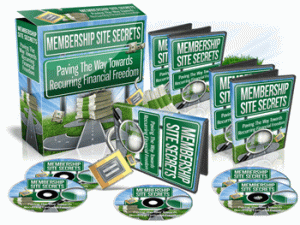
The Most Profitable Exposure Your Membership Site Will Get
Word of mouth publicity is probably the most profitable exposure your membership site will get.
Word of mouth recommendation is more valuable to you than any affiliate program for one very simple reason. If a marketer says that your site is great, that is seen as marketing.
If a member says that your site is great, that is seen as fact. Word of mouth is significantly more powerful than the strategic marketing you pay for.
Word of mouth marketing means more than one person speaking with another to discuss or promote your website. Email, forward to a friend, forums and chat rooms, and blogging are fantastic word of mouth means of promoting your site as are testimonials and reviews.
What are the keys to successful word of mouth promotion?
First and foremost…you must offer a valuable membership site.
Your members will only promote your site if they feel they are getting good value for their subscription.
Increase the value of your membership by:
Providing quality, up-to-date content and make sure you post new content and articles on a regular basis.
Offering your members free downloads, such as e-books and seminars, and make sure they know what they are worth.
Send out newsletters telling your members when new material is going to be available on the site and what it will be.
Make sure that the release date for the new material is after they have to renew their subscription so they keep their membership for another month.
Provide free, downloadable content.
Operate a successful forum that offers multiple benefits like problem solving, announcements, shared experiences, lively discussion and special offers for members only.
Secondly, embrace and support your relationships with other businesses and internet marketers.
If you form good relationships with other internet marketers, businesses, and even your mentors and coaches, there is a good chance they will mention your name and your membership site in their newsletters and other communications without charging you a commission.
Of course, for a successful mentor to recommend your site to their customers they have to like it and you have to make use of their methods. They will not risk their credibility by referring their mailing list to your membership site if they do not consider it to be of high quality.
Here are some tips for increasing your word of mouth exposure:
• Make your site interesting; nobody will want to talk about a dull site however useful they find it.
• Earn the trust and respect of your members. They will not recommend you if you have let them down or made promises you haven’t kept.
• Give bonuses for referrals or increase the value of their membership.
• Make it easy for them to talk about you. Bear in mind that any e-mail or newsletter you send may be forwarded to a friend or colleague as a recommendation to your site. Make sure you include a link to your site.
• Give them something specific to talk about such as a special offer or promotion.
• Respond to what they say about you. If you find people are talking about your site on a blog join in and thank them.
The Importance of Quality Web Content – And How To Get It
Search engine optimization is crucial to get traffic to your membership site. You likely already know this because it’s difficult to avoid. Everyone and their brother has an idea about how to best go about getting your membership site listed high on the search engines.
The truth is actually much simpler. The truth is that content always has been and is still the key to search engine optimization.
Good content is the best way to keep the search engines happy
What type of content must you have? The best, of course!
Okay, here’s what you really need:
• Articles
• Product reviews
• How-to guides
• Reports
• Seminars / Training courses
• Discussion Forums
• Blogs
Use unique content everywhere, or at least everywhere that you can.
The duplicate content issues have gotten a little bit out of hand and overall you can still use reprint articles and PLR content as a good way to get traffic to your site. However, try to include your own unique content as well.
To be classed as unique, your webpage text needs to be at least 30% different than any other webpage on the internet.
Similarly, if you use PLR (Private Label Rights) material, alter this to make it unique content.
Although less people will have access to this material, many of them will use the material as it is without making any changes. You’ll definitely want to change the Title Tag and perhaps the first few sentences of the article.
Ideally you want to create content for your membership site from scratch, to make it targeted and relevant to your audience. If you do not want to produce the content yourself, hire a ghostwriter.
Add new content constantly!
To maintain a high page rank with the search engines, webmasters need to regularly add new content to their websites.
This won’t be an issue for membership site owners, who will have to add new content frequently just to ensure their members continue to pay their subscription.
A blog is a great way to add content to your site on a regular basis. Post something on your blog at least once a week, but more often if possible. Encouraging your members to comment on your blog may give you ideas for follow up blog posts, and will also increase your search engine ranking as you will see below.
Encourage, entice, and even bribe your members to submit content.
Having other people submit content for your site will help to increase your traffic flow.
Get your members to add content to your site in the following ways:
1. Discussion forums
Encourage them to post on discussion forums. You will need software that allows forum posts to be picked up by search engines to make this effective.
2. Blog comments
Allow them to add comments to your blog. Preventing blog spam may require specific software and give your members a code to enable them to post comments.
3. Product reviews
You could ask members to review your products after they purchase. Of course you need to make sure you have quality products to avoid negative reviews.
4. Articles and ideas
Ask your members to submit relevant articles and ideas to you site. Always give them credit for any material you use. Perhaps you could run a members’ contest and give a suitable prize or monetary reward each month for the best article or tip submitted.
12 Tips To Optimize Your Membership Site For Search Engines
1. Use unique content wherever possible
PLR and free reprints can be modified to look original to the search engines. To be classed as unique, the copy must be at least 30% different than any other webpage on the internet.
In addition to free reprints and PLR, it pays to also create content for your membership site from scratch. Outsource this task to a ghostwriter to save time.
2. Add new content regularly
To maintain a high page rank with the search engines, and a quality membership site, webmasters need to regularly add new content to their websites. A blog is a great way to add content to your site on a regular basis. Encouraging your members to comment on your blog may give you ideas for follow up blog posts, and will also increase your search engine ranking.
3. Choose the perfect keywords
• Select specific keyword phrases that are relevant to the webpage you are optimizing rather than general terms. Although general terms draw more searches, there is a lot of competition for them and it will be difficult to get your page a high ranking.
• Specific keyword phrases will get typed in less often, but you will get more targeted traffic and a higher page ranking for these phrases.
• Look at what your competition is doing. Check out at least the top ten results for your keyword phrases on various search engines. Look at the source html codes and metatags on your competitors web pages to get some ideas.
4. Don’t jam in the keywords but consider your keyword density
The optimal keyword density is unclear, but many recommend aiming for 3% and 7% to get the most traffic without being penalized by the search engines.
Keep in mind that both search engines and your readers prefer quality content that flows over keyword stuffed articles.
5. Put them where they count – keyword prominence
Prominence refers to where you place your keyword phrases on your webpage. Search engines will put a higher value on keywords near the top of the page, so make sure your first paragraph is keyword optimized as well as your Title and H1 tags.
6. Keep them together – keyword proximity
While you do not have to keep all the words in your keyword phrase together for search engine optimization, keeping them close together will add search engine value.
7. Don’t forget to vary your keywords – LSI
In addition to keywords, search engines look for phrases that they expect to see relating to that keyword on the webpage. The presence of these phrases increases your search engine ranking.
LSI is designed to make sure keywords are used in context and that irrelevant content that is stuffed with keywords is penalized.
8. Dynamic Linking
To achieve a high search engine ranking it is important to get other sites to link to your membership site. These will be one way links, or reciprocal links, where you link to another site in return for them linking to you.
9. Don’t make them stop to ask for directions.
Structure your site so it’s easy to navigate. If a person can easily find their way, then the search engine spiders will also have an easier time getting around your web pages.
Make sure your membership site has a site map and that all major pages of your site are easily accessible from your members’ home page.
10. Captivate with attention grabbing headlines.
Use informative headlines throughout your webpage content, including your keyword phrases where appropriate.
11. Tag, you’re it.
Include descriptive Alt tags on your graphics. These need to make sense and explain what the graphic is, but you’ll want to also include your keywords if possible.
12. Tag, you’re it again…
Use descriptive title tags on all of your web pages to show what the page is about. Limit these to 59 characters. Add descriptive description tags to all web pages, and limited to 150 characters.
3 Simple Steps to Profitable Press Releases
Step #1 – Newsworthy Websites Generate Great Press
A successful publicity campaign using a press release requires a good story. You need to come up with something original about your site that will be interesting to the general public and not just to people involved in your niche subject.
Two ways to get interest in your press release are:
1. Relate your press release to a topical issue that has recently had a lot of media
coverage. Tie it to anything – as long as it has relevance to your membership site.
2. Tie your press release into a particular event, exhibition or tradeshow that somehow
relates to your niche subject.
Step #2 – Follow the Format
Title
Cover the most interesting aspect of your press release in as few words as possible. Make it punchy and attention grabbing, with maximum impact.
Subheading
This is your chance to add some detail about what your press release is about without spoiling the effect of your forceful heading.
Lead paragraph
This will be a factual paragraph giving all the details of your story. It will answer the questions who, what, where, when, and how. If the editor has read further than your title, this paragraph will make up his or her mind about whether to use your press release.
Main body of text
The rest of your text will give information to support the story you told in the lead paragraph.
Including quotes from your members is often an effective technique in this section, but remember to respect their privacy.
Boilerplate
The final paragraph, known as the boilerplate, will be a few sentences about your membership site, what it is about and what you offer.
End your press release with the word “End”, add your contact information after so the editor can contact you easily to clarify information.
Essential tips for writing your next great press release:
1. Always write in the third person.
2. Keep your press release as short as possible. Edit ruthlessly and get rid of any unnecessary words and phrases.
3. Avoid hype phrases to describe your membership site such as ‘one of a kind’ or ‘out of this world’. Your press release is not a sales pitch.
Step #3 – The path to profitable publication.
If you want to get your press release published offline, here are a few pointers:
Research your publication
Choose a publication that is suitable for your niche subject, and which will be read by your target audience. Read that publication regularly, and get an idea of the kind of articles they print as well as the tone used.
Find out who the most appropriate journalist or editor would be for you to approach with your press release.
Make the call
When contacting the editor, your approach will be polite and professional. Always call before you send them your press release; busy people tend to delete unsolicited e-mail.
If you get their voicemail, don’t be afraid to leave a concise message with the main angle of your story and your contact details. Call again if you don’t get a response for a couple of days.
If you speak to them in person, introduce yourself briefly and then check if you are calling at a good time. Offer to call back at a more convenient time if necessary.
Don’t launch into a sales pitch about your membership site. Briefly give the editor the details of your story in a straightforward way.
Follow up – quickly
Have a press pack ready before you contact the editor and send this as soon as possible after you have spoken to them. This will consist of your press release and any appropriate photos etc.
Give the editor a couple of days and call again to follow up.
3 Great Ways to Generate Tons of Traffic
For that extra little push your membership website needs to get the traffic that you desire and deserve, take advantage of these dynamic traffic generating tools:
1. High Acclaims for Advertising on Third Party Sites.
Advertising has and always will be a powerful traffic generating strategy however as consumers evolve so too will your advertising methods. Take a look at the following ad types to determine which will best meet your needs.
Banner Advertisements
Banner ads are placed across the top of a webpage. They are a fairly cheap form of advertising, but often get ignored as web users have got so used to seeing them.
To get a higher click-through rate, banners have been designed that grow to fill the whole screen and then shrink back down to their original size.
Sidebar Advertisements
These are placed down the side of a webpage and have a higher click-through rate than banners as they will still be seen when the user scrolls down the page.
This makes them more expensive than banners.
Pop-up Advertisements
These appear in a separate browser window in front of the webpage. They can be annoying to the web user, but they do have a fairly high click-through rate as the user can’t really ignore them. They have to do something with the ad, i.e. close it, move it or read it.
Floating Advertisements
These are similar to pop-ups in that they appear in a separate browser window. They aren’t static however, but move around the screen. They can’t be closed down by the user, but are displayed for a set period of time, after which they disappear.
When they were first introduced they were seen as incredibly annoying, but as web users have got more used to them they have achieved a higher click-through rate than pop-ups.
Unicast Advertisements
A further development of the pop-up ad, unicast ads are similar to short television commercials. They play in a separate browser window for a few seconds and have an extremely high click-through rate.
They are very expensive however, and may not be appropriate for your membership site depending on your niche subject.
Text Links
Text links are a very effective form of advertising on a third party site. The text link is integrated into the website’s content so that it looks like a link to another part of the same site.
When the user clicks on the link, they will be taken to your site, or an advertisement for your site.
2. Co-Registration, getting your foot in the door.
Co-Registration can be a very cost effective way of generating quality sales leads for your membership site.
The principle is simple. When a potential member is filling in an opt-in form for a third party, they are given the option to request more information on various other sites or products.
If they request further information on your membership site, you will be provided with their contact details to add to your mailing list.
On a co-registration form you display your logo and a short description of your membership site. This type of advertisement works best if you place your offer on a website that is related to your niche subject, but that is not a direct competitor.
Submit your offer to a co-registration company, who will find appropriate sites to display it on.
Also ask other sites to put it on the thank you page their customers see after they have opted into that site. A final option is to team up with other relevant sites and create your own third party information site where you can all display co-registration adverts.
What are the advantages of co-registration?
• Co-registration usually works on a pay per name or pay per lead basis, meaning that you only pay when someone actually requests more information on your site.
• Co-reg is a very targeted form of advertising. Somebody requesting information about your site is a much stronger lead than an unsolicited sales pitch.
• In addition to the standard contact information on the opt-in form, you can take it a step further and request other information from your potential customer, which may help you target your sales pitch more effectively.
3. Social networking isn’t just for the teenagers anymore.
Social networking has grown up! Of course for social networking to effectively promote your membership site you have to choose the right network. The network needs to be aimed at the same audience as your membership site.
Find a network that suits your niche subject.
This may have a smaller member base than a more general site, with less networking opportunities, but your audience will be more targeted, and the network will have more staying power.
Is a Pay Per Click Campaign In Your Future?
Calculating the costs and benefits of PPC and Membership Marketing
Pay Per Click
You have no doubt noticed the abundance of PPC ads when you’re online. And when you perform a search on most search engines, there are tons of links at the top or side of the results list that are different from the rest.
What differentiates these ads from each other?
What costs more?
What offers the best results?
The answers my friend are in the testing of your particular ad. Nothing more, nothing less. Don’t let anyone else fool you.
You bid to have your site link displayed on the results page for that particular keyword search.
Depending on the search engine you use, either the highest bid or the best performing link will be displayed first on the page.
You pay the amount of your bid every time someone is directed to your website by clicking on the advertised link. It doesn’t get any more straightforward than that.
The cost of Pay per Click advertising
Depending on the search engine you use, you may have an initial deposit when you open your Pay per Click account of around $50, and a minimum monthly spend of around $200.
Your bid amounts will depend on your chosen keywords.
The bidding system means that the more popular keywords will end up being very expensive.
Keep a careful record of what you are spending on PPC advertising as the costs can quickly mount up and you can end up paying more than you are making.
The following simple calculation will help you decide what you can afford to pay for Pay per Click advertising.
PPC Revenue
——————- = Revenue
PPC Visitors
To get the most out of Pay per Click advertising, bid on as many keyword phrases as you want to afford. Consider less popular keywords that are more targeted to your potential members, and which will command a lower price per click-through.
Monitor and analyze your Pay per Click results carefully. Look both at which keywords are getting you visitors and which of these visitors are actually signing up to your membership site, or buying a product from you.
Focus on the keywords that are getting you the most sales rather than the most visitors.
If you are using PPC advertising extensively it may be worth using a bid management system, or even employing a bid management company to manage your advertising campaign.
This will ensure you are not spending more than you are making, and will help you to focus on the keywords that are generating valuable, targeted traffic to your site.
While the description text you use for general SEO is designed to get as much traffic to your site as possible, your description text for PPC advertising has a different purpose.
Because you are paying for each visitor, you want to make sure that only people who are likely to join your membership site actually click on the link. Your description will make it very clear what your site is about to attract the visitors that are most likely to generate revenue for you.
Test, track, and reevaluate. One campaign may not generate the results that you like, but another may. Keep track of not only the clicks that you receive but the actual purchases from those clicks, that is where the real power is.
Web 2.0 Concepts to Keep Your Members Coming Back Again and Again and Again
Web 2.0 may be the most overused, and misunderstood, term of the decade. What it means, in a nutshell is providing a user driven website. Basically membership marketing websites are Web 2.0.
The users determine the content in the form of forums, blogs, article posting, reviews and so on. To further enhance the usability of your website and thus the benefit to your members, provide a few interactive extras or member benefits.
Training courses are an excellent tool to provide benefit to your members.
• E-mail training courses Getting your members to sign up for an e-mail training course that takes place over perhaps eight weeks, is a great way of keeping your members engaged with your site over a period of time.
• Video tutorials This is a very effective form of training as it is much easier to show your members what you are doing, rather than trying to explain it. It prevents your students from becoming frustrated when they can’t understand what you are explaining, and reduces misunderstanding.
• Teleclasses Teleclasses are similar to conference calls and are conducted over the telephone. They are an excellent way for your members to take part in live
learning, as well as having personal interaction with you and other members of your site.
Product reviews posted by other members is a fantastic interactive medium. It will also engage heated discussions!
Guest interviews Guest interviews with a well known personality who is connected with your niche subject will add huge credibility to your site. Promote guest interviews on your website and in your newsletter.
Forums. Forums are a type of virtual community and provide the opportunity for people with similar interests to talk to each other. Your members will already have a shared interest in your niche subject, so creating active discussion forums won’t be too challenging.
Competitions Encourage your members to post on the forum or blog by running a competition. Award a prize each month to someone who has posted on your forum, and each individual posting would be an additional entry into the prize draw.
Involving your members in polls and surveys
Member polls Asking your members to answer a simple question relating to your niche subject is a simple and effective way to get them involved in the site.
Have a regular monthly poll and publish the results of the previous month’s poll above the question for the current month.
Surveys Some niche subjects lend themselves well to surveys. If yours does not you could conduct a survey about your membership site itself. This gives your members the chance to express their views and let you know what changes they would like to see.
Newsletters may be used to highlight forum posts, questions that people have asked, blog posts and even case studies, survey results, success stories and more. Get your community involved in the content both online and in your newsletter. They’ll be invested in the results.
Get Your PhD in Newsletter Marketing
In a previous article we discussed the power of newsletter marketing to strengthen your community. Newsletters will also help to build your membership because they are easy to forward.
Additionally, they help you communicate regularly with your members, giving you a consistent medium to promote new products, forum discussions, case studies, success stories, special offers, and more.
Encourage membership contribution by asking members to write in questions for a column, or provide success stories or other information that they may
feel is relevant to the site.
Regular e-mail contact makes your members feel involved
What will you include in your newsletter?
Here are a few ideas to get started.
1. Mention the new content you have added to your membership site that week. Give a brief summary of any articles to wet the reader’s appetite and leave them wanting to read the whole article.
2. Give an overview of any interesting discussions on your forum that week. Invite them to log in and join the discussion.
3. Discuss your blog posts for the last week, but also make sure you tell your members what you are going to be talking about in your blog for the following week. This will give them a reason to log in during the week.
4. Use your newsletter to promote any new products you are selling on your site that week, or any affiliate programs you are entering into.
5. It is up to you how much personal information you include in your newsletter, if any.
Some membership site owners often include a short update on what they and their family have been up to that week, to connect on a more personal level with their readers. Others stay completely focused on business but are still friendly.
You’ll need to decide what works best for you.
When and how often will you contact your subscriber?
That, along with what you put in your subject line, seems to be the question of the millennia.
Consider testing a few options to find the one that offers the best results. A lot of it truly depends on your market. 9-5 business people have a different schedule than students and a different schedule than moms.
Moms, whether they’re working or not, may not have time during the weekend to open an email but Wednesday afternoons are relatively free.
9-5 business folks may be more than happy to open an email from you every Monday afternoon for the rest of their lives. The answer…consider who you’re marketing to and then test a few options.
As far as your subject line goes…again, testing is important however many have found that cute and clever gets the trashcan every time. Keep it simple, straightforward, and benefit driven.
Terrific tips for effective newsletters…
• Don’t rely too much on graphics; many of your members’ e-mails will have graphics disabled on html e-mail by default. Make sure you use Alt tags if you do have graphics so your readers will know what the pictures should be.
• Look at your newsletter in the preview panel of Outlook to get an idea what it will look like to your members.
• Make sure you include links directly to your site, preferably to different areas of the site in the relevant sections of the newsletter.
• Use tables for structure. This ensures your newsletter retains its format on most e-mail systems.
The Secret to Providing Superior Customer Support
Once a member has joined your site, the level of customer support they receive can be the deciding factor in whether they continue their subscription. The secret…automate or outsource as much as you can so that someone is always available when your customer needs them.
Why automate your customer support function?
The purpose of automating your customer service function is to deliver great support to more of your customers in less time. For example, deal with all queries quickly and effectively by keeping all your customer details and records in an easily accessible database.
Automating your customer support dramatically increases your organization, which creates a much better impression when dealing with your members.
Gaining the confidence of your members is a great way to ensure continual renewals.
Automating contact with your members will make them feel like you really value their membership.
Using an autoresponder to e-mail them after they initially subscribe to the site, after they purchase a product from you, or even after they post on the forum, will give let them know that you are interested in their activity on your site.
Autoresponder e-mails can also be used to generate profit for your site. For example if a customer buys a product from you, e-mail them to say thank you, and to offer them an up sell.
Outsourcing your customer support saves time and money- and who couldn’t use a little of both?
Outsourcing your customer support functions is a great alternative to handling customer support yourself, or hiring a dedicated employee to do this for you.
A third party customer support company will respond to e-mail or telephone queries, deal with payments, and offer technical support with your website.
Let’s talk money…
Using a third party customer support service offers you economies of scale. Because the third party will be providing the services for many companies, they will provide them more cost effectively than you could for just your own company.
As you will only usually pay per query or transaction, your overheads will be very low and you will not be paying for services you do not use. You may have to pay a minimum monthly fee, but this will still be relatively low.
The time you save by outsourcing, instead of taking on customer support yourself, can be used to generate more income from your membership site.
Here are some things to look for in your customer support service
• The company needs to have an in-depth understanding of how your business and your website work. They also need to have an understanding of your niche subject.
• You need to feel confident and comfortable with your account manager as they will be your day to day contact with the company.
• Make sure the company has examples of the services they have provided for other similar businesses.
• Find out what kind of reporting the company can offer you. You might not want to deal with your members’ issues directly but you will still want to know what they are.
In addition to saving you time and money, research has shown that outsourcing functions such as customer support will improve your business processes and stability.
The improvements you might see when you outsource your customer support include increased ability to plan, quicker and more uniform response to your customers’ queries, and rapid implementation of new strategies and initiatives.
2 Must Haves for Customer Friendly Membership Sites
The best membership sites make their members feel welcome. The best membership sites make their members feel safe, and valued, and respected.
Here are two must haves if you want to be among the best.
1. Respect and value your members with a ‘Terms of use.’
To establish a good relationship between yourself and your members, make them aware of your terms of use when they subscribe. Each membership site has slightly different rules, and if these are made clear to your members upfront, there is less room for misunderstanding later on.
Your terms of use will depend very much on the type of site you offer, but here are a few suggestions on topics you might want to clarify.
Advertising
You need to let your members know whether they are allowed to advertise, or promote their own products on your site. It may be worth having a dedicated area or forum for advertising, and making it clear to your members that this is the only place they are allowed to promote their own businesses.
Content Use
Ensure you have clear rules about what your members can do with the content on your site.
If reprinting is not allowed they need to be made aware of this. If you allow reprinting of articles as long as they include a back link to your site, this also needs to be stated.
Forum Etiquette
Let your members know how you expect them to behave on your forum. Issues to cover may include the use of shouting (capital letters), the use of profanity and obscenity, and the use of abusive or insulting language towards other members.
Also make it clear that all content in forum posts becomes your property, and you have the right to use it in any way you wish, including promotion of your site.
2. Inform your members with a dynamic and member driven FAQ page
FAQs, or Frequently Asked Questions, are a list of the most common queries your members will have about their day to day use of your membership site, along with pre-prepared answers.
No matter how user friendly you make your site, there will always be some confusion as to how it works and you want your members to have as simple an experience as possible when they want answers to their questions.
Every website is different and so your FAQs will be very specific to your membership site.
Here are a few suggestions to help you put together your FAQs list.
• Make a list of any questions you think of while you are testing your site.
• Ask your members to make any contributions to the FAQ list. This is another way to get them involved in the site.
• Add questions that your members ask regularly via e-mail once the site is up and running.
• Your FAQ list will be constantly evolving, so make sure you review it on a regular basis and add new questions if necessary. Make sure the answers are up to date, particularly if you have made any alterations to your site. Remove any questions that are no longer relevant to avoid confusion.
Always have a ‘contact us’ link on your FAQ page, inviting your members to e-mail you a question directly if their query is not covered. Being able to e-mail you easily reduces frustration they may feel if they’re not able to find the answer to their question quickly.
In conclusion
As you can see in Volume 2 we’ve further expanded upon the principles of running your own powerhouse membership site. Again, it’s best if you print this volume out and sit down in a quiet place with it to fully digest and appreciate it’s content.





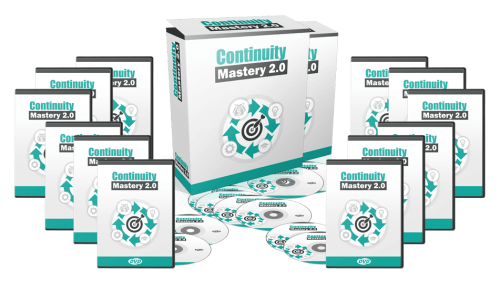
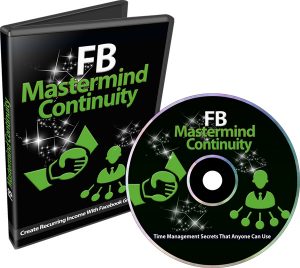
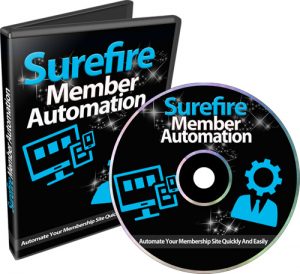

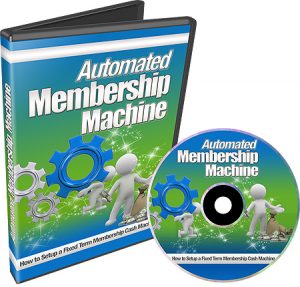

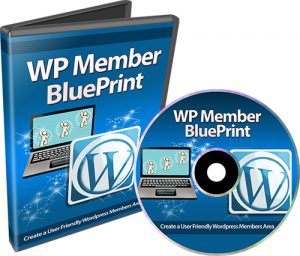
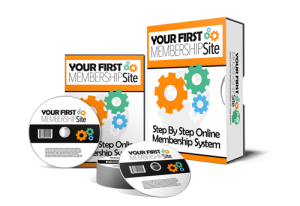


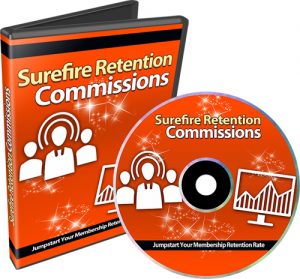
 ,/p>
,/p>